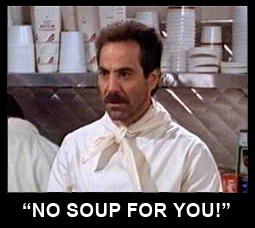Your humble blogger has had occasion to touch upon the initial physical aggressor defense in the past. That great defense, the one found in Labor Code section 3600(a)(7) provides a bar to workers’ compensation benefits where the initial physical aggressor was the allegedly injured worker.
Ponder, if you will, the recently writ denied case of Mattas v. Shoker Trading Corp. Applicant, a car wash employee, while on his unpaid lunch break, got into an altercation with a customer. There was some history there of past unpleasant encounters with that customer at the car wash… and the rest gets hazy.
Applicant alleged that the customer threw a coup of hot soup in his face, and then attacked him. The customer, by contrast, claimed that the applicant attacked him first. The defendant-employer, of course, raised the defense of “initial physical aggressor,” claiming that applicant initiated the altercation.
The matter proceeded to trial, and the record was, shall we say… spotty at best. The video provided by the employer was graining and didn’t offer much in terms of identifying either the customer or the injured worker. The events leading up to the fight could be taken to be the customer throwing soup at the injured worker… or the customer making a slight hand gesture with his hand.
The witnesses weren’t very helpful either, apparently, being vaguely aware that a fight occurred.
All in all, after the trial, the WCJ held that defendant failed to meet its burden to prove up the defense, reasoning that, at best, it was unclear as to who the initial physical aggressor was.
The WCAB, in a split panel, on defendant’s petition for reconsideration, took another position (while reaching the same conclusion). The WCAB noted that the WCJ’s summary of the video offered at trial reflected that the customer was agitated and kept getting closer to the injured worker. This was sufficient to make the customer the initial physical aggressor, in that he was acting in a threatening and intimidating manner.
But, there was a dissent. The WCJ noted that there was no evidence of actually aggressive language or gestures. While the video may lend itself to that interpretation, the applicant never testified to being afraid or feeling threatened, and absent such testimony, you might need actual physical aggression initiating from customer.
I don’t think it’s the surprise of the century that your humble blogger agrees whole-heartedly with the dissent. Generally speaking, most legal tests require a subjective and objective component: assault is placing a person in a reasonable fear of an imminent battery, so how could one assault a person by pointing a gun the person knows is unloaded at them? How could this applicant be the victim of someone else’s initial physical aggression when there was no physicality and no aggression?
